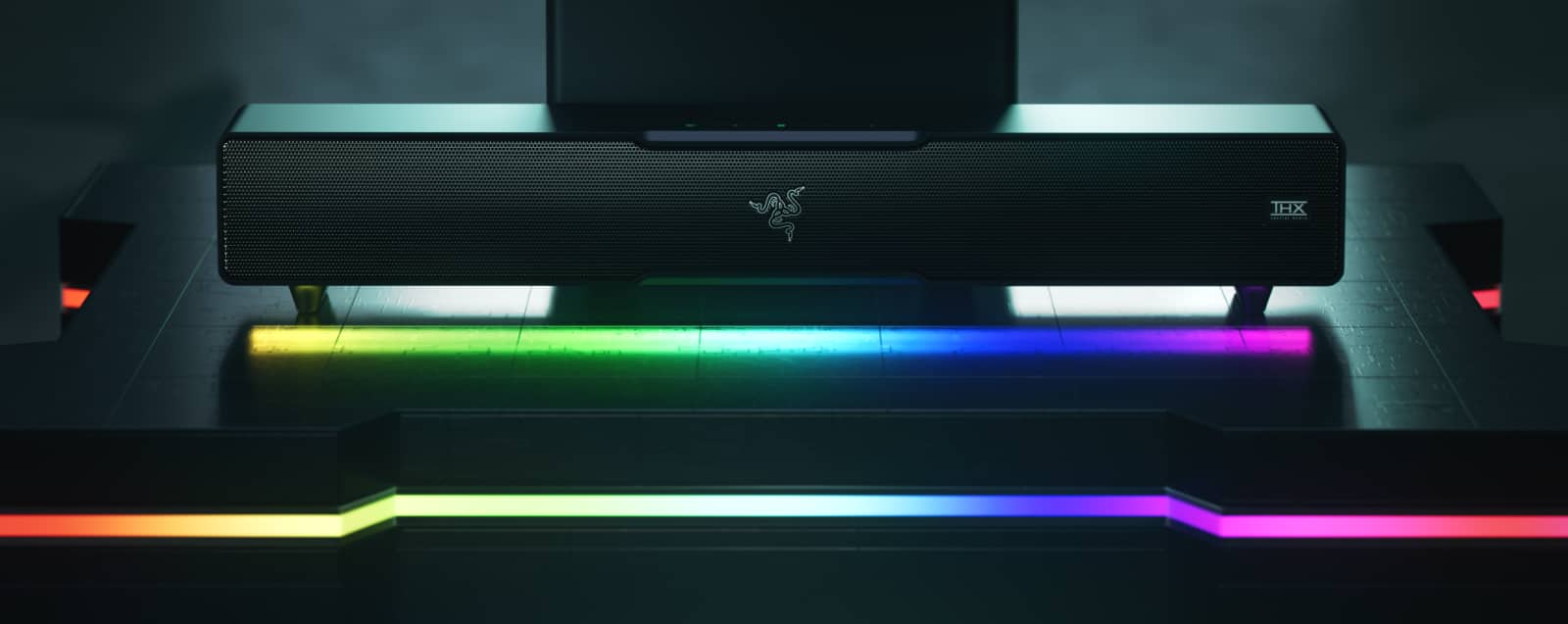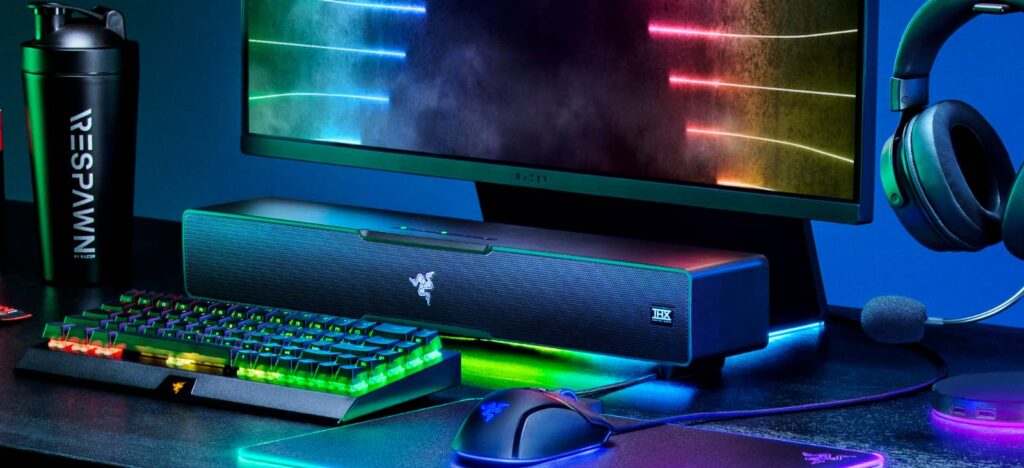The world of spatial in games can come to PCs via one speaker, but it won’t quite get you everything in 3D sound, it seems.
Soundbars have become the logical place for TV owners to upgrade their sound quickly, typically because it’s so easy to do. Grab a soundbar, plug it in, and your TV will often get a better soundstage to work with, which depending on the feature set can sound like more is happening around you.
In the world of computers, things haven’t always been quite like that, but soundbars are gradually painting a different picture there, too.
Many will put up with the sound from their computer, though depending on the computer you have, it mightn’t be a need to “put up” with anything. The speakers on many a desktop and laptop are great, and you only need to check out the sound on the M1 iMac to see just what we’re talking about.
But not everyone has that, and if the sound from your computer isn’t fantastic and you’re typically plugging in headphones just to make everything better, a soundbar could help. Like in the world of TVs, it’s one speaker that can be added to make everything easier and better, and it may even give you a burst of 3D sound, feature dependent.
In Razer’s latest desktop soundbar, that appears to be pretty much the focus, with the Leviathan V2 packing in the tech to bolster sound on the desktop, while offering a little more.
A follow-up to the original, the V2 Leviathan bring in a good seven speakers, with two full range drivers, two tweeters, two passive radiators, and a down-firing subwoofer, but packing it in a small design.
There’s the option to send out to a wired subwoofer if need be, but overall, the Leviathan V2 is built to be compact, sitting under a screen, with a combination of tech that results in a 7.1 style speaker with a degree of spatial sound, thanks to Razer’s purchase of THX years ago.
Razer already has a THX 3D sound driver system, but it’s Windows only, and this is no different, with the company confirming to Pickr that the spatial sound on offer from the Leviathan V2 is built for Windows only — sorry Mac users — though other operating systems can use the speaker without spatial.
It means things like Apple Music playback will miss out on Atmos spatial when used with a Mac, while Windows has yet to support the functionality. Razer did confirm that Netflix in Windows could run spatial audio even from the web browser, though its Synapse software emulates spatial audio rather than takes the original Atmos feed. That’ll be a degree of 3D sound even if the real soundtrack has a proper 3D soundtrack.
Outside of spatial, Windows and Mac can plug into the speaker system using USB for stereo sound, turning the Leviathan V2 into a sound system for your computer, while other devices can send their audio wirelessly over Bluetooth, including phones, tablets, and even a Nintendo Switch.
Like other Razer devices, you’ll also find more of that colourful RGB lighting that can be controlled with an app, otherwise you should just be able to switch it off if you don’t need any extra bright lights on your otherwise clean desk.
As to how it sounds, we’re not sure. Our guess is the 3D sound offered by THX in the Leviathan is likely going to be a psychoacoustic sound not unlike the experience offered by other small soundbars without upward firing speakers, such as the Sonos Beam Gen 2, something we’re actually using as a desktop soundbar. However, the idea of packing in a 7.1 system in such a small device is intriguing, and one we’re keen to have a play with.
Folks interested in that will find the Razer Leviathan V2 in select stores later this year, arriving in Australia for a recommended retail price of $409.95.








